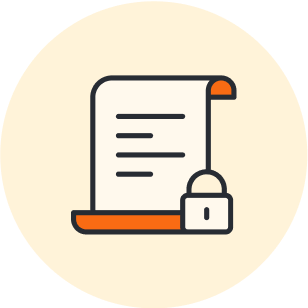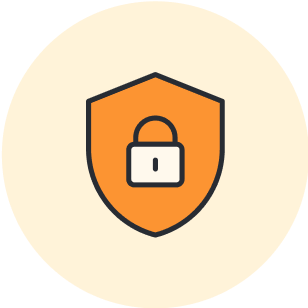
Understanding different types of compliance audits and what they mean for your business
Reading time: about 8 min
Topics:
Whether your organization is large or small, compliance is an important part of running a successful business.
But what exactly does compliance mean and how can you tell if you’re compliant?
A compliance audit is a formal external review of an organization’s operations and procedures to ensure they are following all applicable laws, rules, standards, and regulations. In other words, a compliance audit asks, “Is the company doing what it’s supposed to do and what it has agreed to do?”
The audit report identifies any gaps in compliance and makes recommendations for resolving the issues.
Visualizing these processes and operations is one of the best ways to accurately observe and evaluate compliance in a complex system. Visualizing the data helps the auditor identify and understand any disconnects in the process flow so they can make more precise judgments and recommendations.
Compliance is important for maintaining professional standards of business, reassuring partners and clients, and protecting consumers. Noncompliance could lead to significant penalties and sanctions, and damage to your reputation, so regular compliance audits are crucial to ensure everything is in order.
Compliance audit vs. internal audit
Two common types of audits that often get confused are compliance audits and internal audits. Although compliance audits and internal audits may be conducted by the same personnel, they review different aspects of the business.
The difference between a compliance audit and an internal audit is that compliance audits evaluate the organization’s adherence to outside laws and regulations (that may apply broadly across industries), whereas internal auditing gauges how well the organization adheres to their own internal codes of conduct and formal operational processes.
Though the two audits are distinct, it is helpful to conduct both in order to gain a comprehensive understanding of your internal and external compliance.
Types of compliance audits
There are many different types of compliance audits based on various industry and governmental regulations. The kind of business you run, where it operates, and what data you handle will determine what compliance audits you should be prepared for.
Below are a few of the main types of compliance audits you may encounter:
HIPAA compliance audit
The Health Insurance Portability and Accountability Act (HIPAA) was passed in 1996 to protect the privacy and security of Americans’ medical information, reduce healthcare fraud, and ensure coverage for employees who lose or change jobs.
Who HIPAA applies to
Any company that handles protected health information for clients in healthcare treatment, payment, or operations must comply with HIPAA. Protected Health Information (PHI) includes data in digital, hard copy, or oral form.
Covered entities include health insurers, health care clearinghouses, and any health care provider who transmits health information (including business associates, such as contractors).
For patients, HIPAA compliance provides peace of mind that their private information is secure and properly handled, shared, and protected.
Compliance guidelines
So what does compliance mean for you and your business?
Broadly speaking, you will need to ensure proper measures are taken to protect the privacy and security of health data that is used, shared, and stored by your company. Your processes should include technical, physical, and administrative safeguards.
Noncompliance can result in severe penalties depending on the level of negligence. Fines can reach millions of dollars and some violations carry the risk of criminal charges and jail time.
Conducting a HIPAA compliance audit can help you identify gaps in your data security and processes and prevent costly violations.
GDPR compliance audit
The General Data Protection Regulation (GDPR) is legislation passed by the European Union (EU) in 2018 that affects any organization in the world that collects or processes data related to citizens of the EU.
So even if you are a U.S. company, you must comply with the GDPR if your business:
- Processes the personal data of EU citizens or residents
- Offers goods and services to EU citizens or residents
The goal behind the legislation is to align data privacy laws across Europe to provide more consistent and effective privacy protection for EU citizens.
GDPR requirements
The GDPR has broad standards that can make compliance tricky to navigate. However, there are several key privacy and data protection requirements:
- Organizations must have consent from the subject to process their data.
- Collected data must be anonymized.
- Data must be safely handled for cross-border transfer.
- Certain companies must appoint a data protection officer to oversee compliance.
Failure to meet GDPR regulations can lead to fines of up to 20 million euros or 4% of the total annual worldwide turnover of the previous financial year (whichever is higher).
In other words, staying on the right side of GDPR compliance is crucial. A GDPR compliance audit will help you get there.
If you haven’t performed a GDPR audit before, the first audit will likely be the most difficult and time-consuming because you will have to map out your entire data processing environment. But once you’ve performed your initial compliance audit, subsequent reviews will be much easier.

Dive deeper into GDPR compliance, including ways that you can streamline your GDPR documentation processes.
Learn moreSarbanes-Oxley (SOX) compliance audit
The Sarbanes-Oxley Act (SOX) was passed by Congress in 2002. SOX compliance is mandatory for all public companies (with some provisions applying to privately held entities as well).
SOX introduced significant changes to the regulation of financial practice and corporate governance in response to the corporate financial scandals involving Enron, Global Crossing, and WorldCom.
The goal of SOX is to “protect investors by improving the accuracy and reliability of corporate disclosures.”
SOX compliance requirements
The guidelines outlined in SOX have a far-reaching impact on business operations.
SOX compliance covers rules and standards for:
- Electronic records management
- Data protection
- Executive accountability
- Internal controls reporting
Because of its broad applications, SOX compliance demands efforts from both finance and IT. During a SOX compliance audit, both departments must work together to align their efforts and processes.
Failure to comply with SOX can result in severe penalties for both the company and the CEOs and CFOs. Depending on the violation, companies may lose their exchange listing or incur fines up to millions of dollars. Executives who disclose inaccurate information can also face fines and imprisonment.

See how flowcharts can help you understand and alter your current processes and easily demonstrate your SOX compliance.
Check it outPCI compliance audit
Payment Card Industry Data Security Standards (PCI DSS) are designed to protect consumers and their data associated with credit card use.
These PCI compliance standards apply to anyone who processes payment cards, including merchants, financial institutions, and point-of-sale vendors, as well as hardware and software developers who create the infrastructure to process payments.
PCI compliance guidelines
To ensure PCI compliance, companies must:
- Assess their business processes, IT infrastructure, and credit card handling procedures to identify risks to credit card data.
- Address any gaps in data security.
- Avoid storing sensitive cardholder information, including social security numbers.
- Provide compliance reports to the card companies they work with.
Noncompliance can result in fines for the merchant of up to $100,000 per month, a potentially catastrophic hit for small businesses.
A PCI DSS compliance audit will help you map your processes (including making network diagrams to visualize any PCI compliance needs), identify procedural gaps or risks, and make a plan for improved data handling to avoid any PCI compliance issues.

Have you been tasked with creating network documentation for PCI compliance? Learn tips and tricks from a CISSP/QSA to ease that diagramming process.
Read moreSOC 2 compliance audit
Developed by the American Institute of CPAs (AICPA), SOC 2 is a common compliance standard for technology companies today.
SOC 2 compliance applies to service providers who store customer data in the cloud and requires them to follow strict policies and procedures to protect information security.
SOC 2 compliance focuses on five principles:
- Security
- Availability
- Privacy
- Confidentiality
- Processing integrity
There are two types of SOC 2 audits or reports: Type I and Type II.
SOC 2 Type 1
SOC 2 Type I audits a vendor’s systems and assesses whether the security controls are properly designed.
SOC 2 Type 2
SOC 2 Type 2 compliance audits the effectiveness of the vendor’s operational systems. This audit is conducted over a period of time (around 6 months for the initial audit).
Though SOC compliance is not required, it demonstrates a company’s commitment to data protection and customer security and is an increasingly important concern for businesses working with cloud-based service providers.
ISO compliance audit
The International Organization for Standardization (ISO) develops and publishes international standards for a variety of industries. The ISO works with over 160 countries to regulate industry standards to align business practices and resolve interoperability issues among equipment and practices.
One of the most popular ISO standards is the ISO 9001 standard. It focuses on the principles of total quality management to ensure continual improvement.
A meta-analysis by ISO found that ISO 9001 certification resulted in lowered costs and increased income, with the most significant gains seen by companies that focused on internal quality improvements beyond basic compliance.
ISO compliance vs. ISO certification
Organizations that follow one or more ISO standards but have not undergone a formal certification audit are considered ISO compliant. They can also receive compliance accreditation from an external firm to provide quality assurance for their customers and vendors that they are following industry standards.
To be ISO certified, organizations have to undergo a longer auditing process by a third party that evaluates the company’s adherence to the ISO standards. ISO certification is voluntary, but it helps organizations increase their customers’ trust and satisfaction.
Compliance issues affect businesses and organizations across industries and borders. Proactively addressing those issues with a compliance audit can save your business time, money, and customers and help you improve your operations for years to come.

See how Lucidchart can help ease the burden of PCI compliance (and any other type of compliance audit).
Learn moreAbout Lucidchart
Lucidchart, a cloud-based intelligent diagramming application, is a core component of Lucid Software's Visual Collaboration Suite. This intuitive, cloud-based solution empowers teams to collaborate in real-time to build flowcharts, mockups, UML diagrams, customer journey maps, and more. Lucidchart propels teams forward to build the future faster. Lucid is proud to serve top businesses around the world, including customers such as Google, GE, and NBC Universal, and 99% of the Fortune 500. Lucid partners with industry leaders, including Google, Atlassian, and Microsoft. Since its founding, Lucid has received numerous awards for its products, business, and workplace culture. For more information, visit lucidchart.com.
Related articles
Best practices for PCI compliance
Using credit card data means your organization needs to think about PCI compliance. By understanding your organization’s PCI compliance scope, you can efficiently and effectively prepare your organization to stay in compliance.
Understanding different types of compliance audits and what they mean for your business
A compliance audit is a formal external review of an organization’s operations and procedures to ensure they are following all applicable laws, rules, standards, and regulations. Learn about different types of compliance audits, including HIPAA, GDPR, SOX, and PCI.
Trying to Meet SOX Compliance? Meet Lucidchart
See how flowcharts can help you demonstrate SOX compliance and why you should choose Lucidchart as your visual communication platform.
GDPR Compliance: What it is, How to Get Ready, and How to Streamline Compliance Processes
This quick overview of GDPR answers all of your basic questions about compliance, and provides free resources and strategies to streamline compliance. You'll learn about what GDPR is, what you need to do to be compliant, how GDPR affects your company long-term and how you can streamline GDPR documentation and processes.
